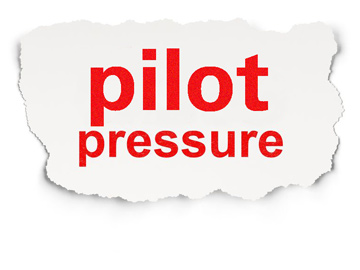
Pilot pressure and the layout of a non-towered aerodrome contributed to an airspace incident between a Beech 1900C and an Aerospatiale AS350 B2 helicopter, according to an ATSB investigation.
The incident occurred on 6 September 2012 at Newman Aerodrome in Western Australia. The Beech had made all required radio broadcasts and was on its take-off roll when the pilot saw the Aerospatiale helicopter unexpectedly enter the runway strip and take off parallel to the runway. The pilot of the Beech believed the paths of the two aircraft could cross if they both became airborne and, although his airplane was by this time moving at about 222 km/hr, he aborted the take-off. As the aircraft slowed, he saw the helicopter turn right and cross the runway about 200 m in front of the Beech and about 200 ft above ground level.
The pilot of the helicopter only became aware of the Beech when he heard the Beech’s co-pilot broadcasted that he was aborting the take-off. The Aerospatiale pilot made all required radio broadcasts but heard only one garbled transmission which may have been the Beech’s ‘rolling’ call.
New hangars had recently been built at Newman, which obscured the view from the GA apron to the threshold of the runway.
The pilot of the helicopter later explained that he had received word that a person at a survey site had been injured and required immediate evacuation. Feeling pressure to get to the injured person, he had turned right across the runway when the normal procedures required him to turn left.
At and around non-towered aerodromes, pilots are responsible for making themselves aware of nearby aircraft and maintaining separation. However, new hangars had recently been built at Newman, which obscured the view from the GA apron to the threshold of the runway. The hangars were also thought to be responsible for blocking radio transmissions between aircraft on the GA apron and those on the threshold of runway.
In response to this incident, the airfield operator is seeking to have a warning included in the aviation information publication for Newman. This warning describes the possible shielding effects from the aircraft hangars and requires adherence to specific procedures for helicopter arrivals and departures.
A study by the National Aeronautics and Space Administration (NASA) has found that perceived or actual pressure can contribute significantly to degradation in human performance and behaviour. The study recommended that pilots be particularly cautious if distraction or time pressure are encountered during the pre-flight or taxi phases of a flight.
The ATSB investigation report, AO-2012-118, contains links to useful resources on pilot pressure.
The SafetyWatch web resource also contains important information on safety in the vicinity of non-towered aerodromes.


